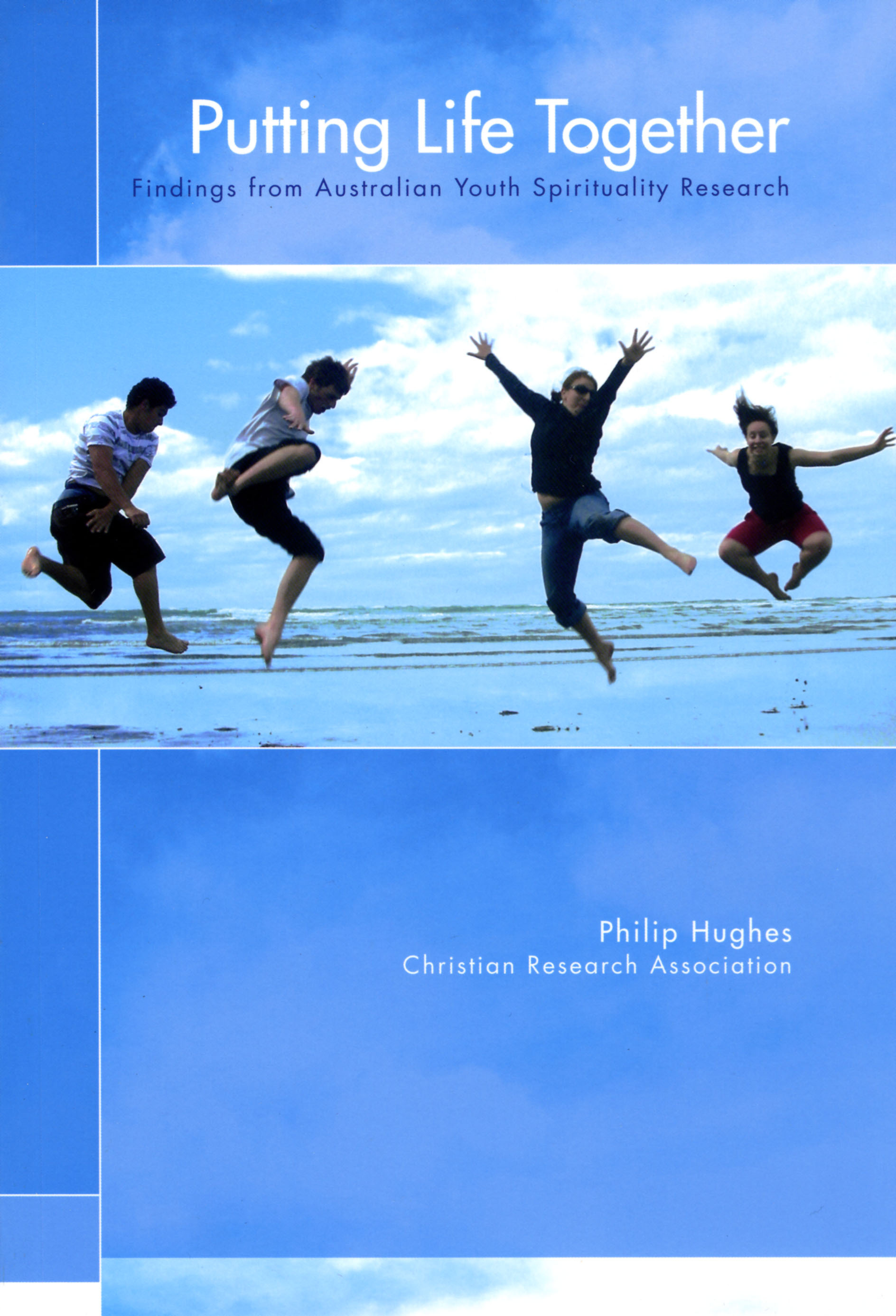Philip Hughes published his book, Putting Life Together, back in 2007, in some ways a minority report from the Spirit of Generation Y project he’d been working on with Michael Mason (Australian Catholic University), Andrew Singleton (Monash University) and Ruth Webber (Australian Catholic University).

Philip is the senior research officer of the Christian Research Association and a fellow in the School of Social Research, Edith Cowan University. He’s a minister with the Uniting Church in Australia, living in Melbourne.
The Spirit of Generation Y team interviewed young people between the ages of 13 and 24, focusing on the ways young people relate to religion and spirituality, and how families, schools and churches might best contribute to preparing young people for the future.
“Putting Life Together” looks at the ways in which young people put life together (process of integration) using four domains: friends and family, society, the natural environment, and religious faith or whatever else influences young people’s views of the world and ways of life.
Philip’s analysis involves four levels of health:
- Negative relationships of hurt, distrust, anger or lack of interest.
- Positive relationships of interest and enjoyment.
- Ethical sense of care and responsibility within relationships.
- Spiritual level of commitment to one’s inner self and love.
Philip’s outlines four main aims for his book, Putting Life Together:
- Measure the levels of relationships that Australian young people have in these various relationships with self, others, society, nature and God.
- Describe the content of these relationships for Australian young people and ways by which they seek to form them, and how young people experience these relationships.
- Identify some of the processes whereby these relationships are formed and developed and some of the influences on the formation of these relationships, in particular the influence of of school, church and religious institutions.
- Consider the implications of the level and content of these relationships among young people for how families, churches and schools can assist people in the development of these relationships.
Developing a research project on youth spirituality is a difficult task, particularly when you’re in a country that is known for high levels of secularization. “Religion” is not a concept that many young people relate to. But neither is the concept of “spirituality”. I think Philip is on the right track here as he chooses to focus on the process of integration in the context of relationships.
At the launch of Philip’s book in 2007 I was aware of conflicting paradigms among the Spirit of Generation Y team, in some ways reflecting generational biases. The premises used in Philip’s presentation here, I believe, reflect a baby boomer bias. Pain, hurt and dissatisfaction are seen as indicators of low levels of spirituality. Perhaps the four parameters would have more consistency if they were used as part of a scale to measure integrity, resilience and generativity. In fact, Philip is comparing the results with the Wellbeing and Security survey of 1500 Australian adults in 2002.
The last chapter of the book focuses on youth spirituality and contemporary culture. Phil observes a range of responses to the survey results, ranging, for example, from concern about the lack of certainty of belief, through to deliberate encouragement of young people as they explore their options.
Phil suggests that sociological research can give us hints about the activity of God in the world.
Dialogue Starting Point
Phil points to primary relationships, excitement and fun as the starting points for most young people, not religion and spirituality. However he notes that he’s heard little of the militant secularism that is common among older generations, particularly Generation X.
Phil recommends that churches offer resources and opportunities rather than attempt to pass on a heritage. He talks about young people being open to the story of the other, the story of brokenness and the meeting of challenges.
Comments from young people about formal religion lead Phil to warn churches and church schools about creating unnecessary barriers. He recommends interaction through discussion rather than authoritative preaching or pronouncements, and encourages the use of imagery and music that helps connect with the contemporary context.
Environment for Exploring Faith
Garry Everett, a Catholic educator, observes that religious education has been approached primarily from a cognitive perspective, delivering certitude, while young people are approaching spirituality and putting life together affectively, looking for experiential markers and techniques for the journey.
Phil makes the observation that the young people involved in the survey had attitudes and values that reflected those of their parents, indicating a need to be in dialogue with families rather than just individuals.
Hughes briefly refers to critiques of the Happy Midi Narrative that many of these young people and their parents have bought into (often literally). The “Kingdom of God” concept at the heart of Christianity challenges our society’s obsession with satisfaction.
Research Online
The Christian Research Association has material from the Youth Spirituality Roundtable held in March 2007 online, including the PowerPoint presentation used by Philip as he talked about his findings.
